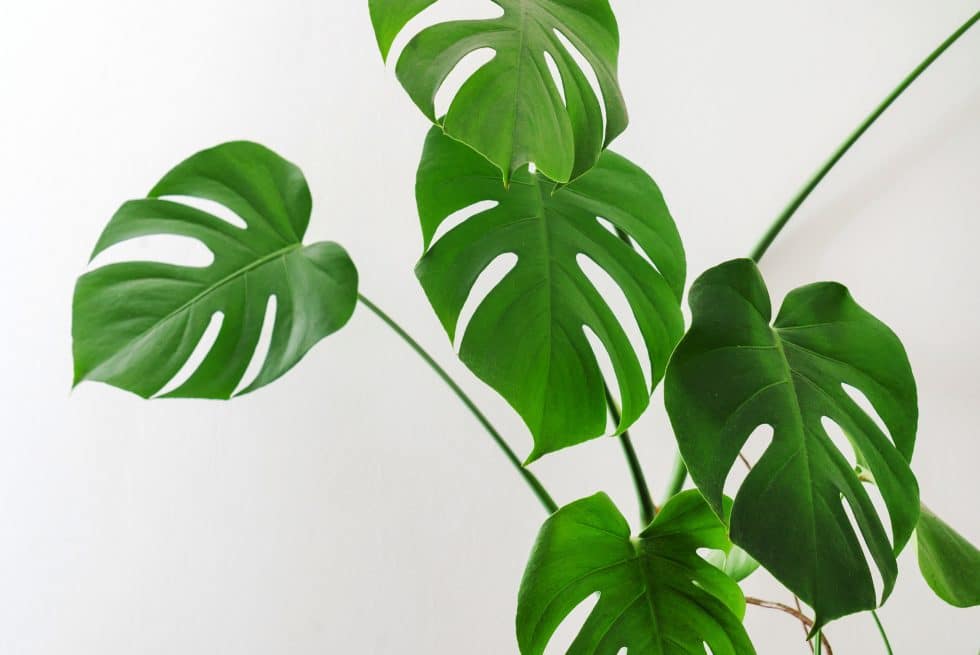Split leaf philodendron is also known botanically as Thaumatophyllum bipinnatifidum. The plant grows in tropical locations and has huge, glossy green leaves with “splits” around the edges. Numerous individuals like growing this plant year-round in their homes, but it is native to areas with warm climates.
Split-leaf Philodendron stems from the Araceae family, which makes an excellent houseplant. It is frequently confused with monstera deliciosa.

Table of Contents
Split Leaf Philodendron vs Monstera Deliciosa
Monstera deliciosa plant’s leaves have holes that do not extend to the edges. It enjoys climbing and needs assistance as it grows. If it were wild, it would climb a tree.
On the other hand, split-leaf Philodendron has leaves that have fissures that go from the margins inward. Additionally, it is a self-heading plant, requiring no assistance to flourish. It, like a tree, has a trunk.
Split-Leaf Philodendron
Few plants have such a profound effect on the interior of your home as this one. This colossal creature from the jungle is relatively easy to get along with on the inside. Although split-leaf philodendron prefers high humidity, it is adaptable to most settings. You can use humidifiers to provide moisture to the air.
This lovely philodendron plant resembles a little tree. Young plants have robust, upright stems. As the plant matures, these stems tend to descend and become detached from the plant. Allow plenty of room for your house plant to grow as you may require stakes to keep plants in place.
The foliage is magnificent. The heart-shaped leaves get more deeply sliced over time—certain varieties of split-leaf philodendron exhibit wavy borders. Dust is attracted to large leaves; hence always necessary to clean the leaves with a moist cloth.
How to Grow Split-Leaf Philodendron
Split-leaf philodendrons can be cultivated in various ways, from seed through air layering. However, cuttings from the stem are one of the quickest ways to grow your plant. Here is a short guide on propagating split-leaf philodendrons from cuttings;
- Trim your stems. Ensure that you purchase a mature split-leaf philodendron. Then, cut it into six-inch-long stems. Slice your stems at an angle to cut from the outside in, not the inside out.
- Before you begin, ensure that your potting soil is prepared. It would be best if you filled a container with potting soil. Then, fill the container with water until the soil is just damp. Make a few small holes in your dirt using a pencil. Each hole should have a small spacing between them. You will use these holes to plant your cuttings.
- Establish the cutting. Using a rooting hormone, coat the bottoms of your stem cuttings and carefully plant them in the soil. This will aid in their development. Ensure the stems stand upright.
- Protect your propagates. Cover your planting container completely with a container cover or plastic wrap. This will create a greenhouse effect which will help them develop better by retaining moisture.
- Examine your plant’s roots. Three weeks should provide plenty of time for your cuttings to mature and ultimately root. During this period, you should monitor your plant’s root development. To check, gently tug on the stem and check whether there is a root ball. Once your plant has developed roots, you can transplant it into a larger container with drainage holes. When doing this procedure, take care not to damage the plant’s root ball.
How to Take Care of a Split Leaf Philodendron
Individuals caring for split-leaf philodendron plants follow many guidelines as those caring for other indoor palms. Split leaf philodendron care tips to ensure your plant develops well include the following:
- How much light does a split leaf philodendron need? This plant prefers robust and indirect light, so it thrives in any area with south or east-facing windows. If it receives excessive direct sunlight, it will start yellowing.
- How much water does a philodendron need? Potting soil should be moist but not squishy. Split-leaf philodendrons can develop root rot and yellow leaves if they receive excessive water in a short period. Utilize a humidifier near or in the room to care for your plant. To add additional moisture, mist your plant using a spray bottle.
- Maintain a vigilant eye out for pests. While most plant pests will avoid the split-leafed philodendron, mealy bugs, aphids, and spider mites may appear if the plant is neglected. To repel insects, spray your plant with soap and water solution.
Split-Leaf Philodendron Uses & Benefits
- Decorative: Its thick, dark green leaves make it an excellent choice for creating the feel of a tropical island in your house.
- Feng Shui; it’s an excellent choice due to its softly spherical leaves. They infuse any environment with a pleasant, natural energy.
- Berries can be cooked and used to create a dessert.
- The split leaf philodendron is beneficial because the roots can aid in digestion, while the stems can be utilized to alleviate discomfort, including inflammation.